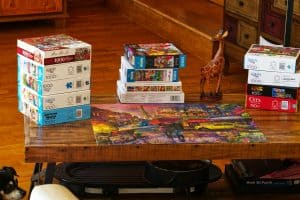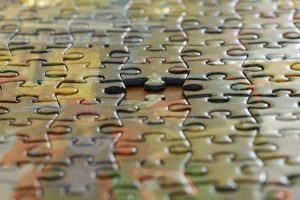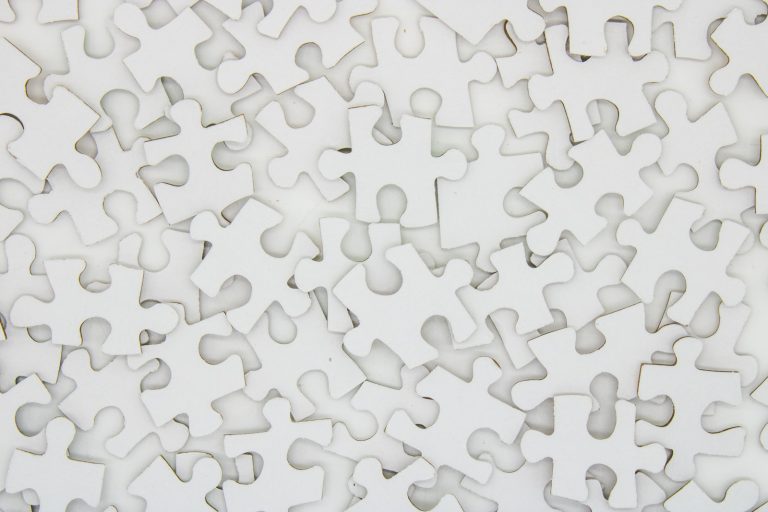Deciding on the right jigsaw puzzle size isn’t just about grabbing the first box you see on the shelf. It’s about matching the puzzle to the puzzler, ensuring it’s a perfect fit for their skill level and attention span. Whether it’s for a young child or an adult looking for a challenge, jigsaw puzzle size consideration matters more than you might think.
I’ve learned through years of puzzling that the joy of completing a jigsaw can greatly depend on choosing the right size. Smaller puzzles might be a breeze for kids, but adults might find larger puzzles more fulfilling. Let’s dive into how picking the proper puzzle size can transform your puzzling experience from frustrating to fantastic.
Why Jigsaw Puzzle Size Consideration Matters
When I’m deciding on a new jigsaw puzzle, one of the first things I consider is the size. It’s not just about the physical dimensions but also the puzzle piece count. The size of a puzzle dramatically influences the solving experience, from the initial sorting of pieces to the final satisfaction of placing the last piece. Here, I’ll delve into why size is such a pivotal factor in the realm of jigsaw puzzles.

The Impact of Puzzle Size on Difficulty Level
It’s widely acknowledged that solving puzzles difficulty level of a puzzle is directly related to its size. Larger puzzles, custom puzzles with their higher piece counts, offer a more challenging and time-consuming endeavor. This is due to several factors:
- Similarity of Pieces: In larger puzzles, pieces are more likely to look similar, increasing the challenge of finding the correct placement.
- Completion Time: Naturally, more pieces mean more time needed to sort, organize, and assemble. This can turn a weekend project into a multi-week commitment.
Conversely, smaller puzzles are generally more approachable, making them ideal for beginners or those looking for a less intense puzzling experience. But it’s not just about the piece count; the complexity of the image plays a crucial role as well. Lastly, here’s a quick comparison:
| Puzzle Size | Piece Count | Estimated Difficulty |
| Small | 100-300 | Beginner |
| Medium | 500-1000 | Intermediate |
| Large | 2000-5000 | Expert |
Factors to Consider When Choosing Puzzle Size
Selecting the right puzzle size isn’t as straightforward as it might seem. It’s not just about the challenge you’re up for but also other vital considerations:
- Experience Level: Your familiarity and comfort with puzzling should guide your choice. Beginners might find larger puzzles overwhelming, whereas veterans may find smaller puzzles underwhelming.
- Available Time: Consider how much time you can dedicate to your puzzle. Larger puzzles require a significant time investment.
- Puzzle Purpose: Are you puzzling for relaxation, or is it about the sense of accomplishment? Your goal can influence your ideal puzzle size.
- Space Considerations: Do you have a large table or a dedicated puzzle area? Larger puzzles require more space than might be readily available.
Understanding these factors has tremendously helped me in picking puzzles that offer just the right level of engagement and satisfaction. Whether I’m in the mood for a leisurely activity or a multi-day challenge, knowing how size impacts my puzzling experience makes the selection process much smoother.
Popular Puzzle Sizes

When diving into the world of jigsaw puzzles, understanding the variety of puzzle sizes available is key to selecting one that suits your preferences and skill level. Whether you’re a beginner, an enthusiastic intermediate, or a seasoned pro, there’s a puzzle size that’s just right for you. Let’s explore the range from small puzzles that are ideal for quick fun to extra-large puzzles that offer an extended challenge.
Small Puzzles (500 Pieces or Less)
I’ve found that small puzzles, those with 500 pieces or less, are perfect for those just starting out or looking for a more casual puzzling experience. Not only do they usually require less space to assemble, but they can also typically be completed in a shorter amount of time, making them a great choice for a relaxing evening or a fun activity with younger family members. These puzzles often feature simpler images or patterns, which can help puzzlers develop their skills without becoming overwhelmed. They measure around 18 x 24 inches, fitting comfortably on most tables.
Medium Puzzles (500 – 1000 Pieces)
Medium puzzles, with piece counts ranging from 500 to 1000, strike a delightful balance between challenge and accessibility. I’ve spent many engaging hours working on these puzzles, which can take anywhere from two to ten hours to complete, depending on the complexity of the image and your personal speed. They’re an excellent step up for those who’ve mastered smaller puzzles and are ready for something more demanding. Medium puzzles have a finished size that often falls within the 20 x 27 inches range, requiring a bit more space and patience to assemble.
Large Puzzles (1000 – 2000 Pieces)
For those who love a good challenge, large puzzles, which include piece counts from 1000 to 2000, offer a rewarding and time-intensive puzzling experience. These puzzles demand more space, often measuring 26 x 38 inches or larger, and can take days, sometimes weeks, to complete. I’ve found that working on these puzzles is a fantastic way to fine-tune my focus and patience, as the complexity of the images and the sheer number of pieces significantly increase the difficulty level. They are ideal for dedicated puzzlers seeking to test their skills.
Extra-Large Puzzles (2000+ Pieces)
Extra-large puzzles, those with 2000 pieces or more, are the ultimate test for any puzzle enthusiast. They provide an intense challenge and an immense sense of achievement upon completion. These puzzles can cover vast areas, with some reaching sizes of 40 x 60 inches, requiring a dedicated space for assembly.
I’ve tackled a few of these behemoths myself, and I can attest that they are not for the faint-hearted. They demand considerable time, patience, and strategy but offer an unrivaled puzzling experience for those who dare to take them on. With intricate designs and a vast array of pieces, they’re sure to keep even the most seasoned puzzlers engaged for days on end.
Tips for Choosing the Right Puzzle Size
When it comes to selecting a jigsaw puzzle, size does matter. Whether I’m looking for a quick solve or a prolonged challenge, considering the puzzle’s size is crucial. In the world of jigsaw puzzles, there’s more than meets the eye. Let’s dive into some essential tips that ensure you pick the right puzzle size for your needs.
Consider Your Skill Level
My first piece of advice is always to take stock of your skill level. If you’re a beginner, diving into a massive, 2000-piece puzzle might lead to frustration rather than enjoyment. Smaller puzzles, with 500 pieces or less, offer a more manageable challenge, providing a satisfying sense of achievement without being overwhelming.
On the other hand, if I’m feeling confident and experienced, I’m more likely to gravitate towards larger puzzles. These not only offer a higher degree of complexity but also allow me to immerse myself in the solving process for longer periods.
Consider Your Available Space
Another crucial factor is the space I have available for puzzle-solving. There’s nothing worse than starting a puzzle only to realize there’s not enough room to lay out all the pieces or leave the puzzle untouched when I need a break. Before choosing a puzzle, I always make sure to measure the space where I plan to work on it. This prevents any surprises and ensures that my puzzle-solving experience is as smooth as possible. Larger puzzles, especially those exceeding 1000 pieces, require a surprisingly large amount of space, so I recommend checking the puzzle’s dimensions and comparing them to your available area.
Consider the Time Commitment
Lastly, it’s essential to think about the amount of time I can dedicate to completing a puzzle. Puzzles come in a vast range of sizes, with the time required to complete them varying just as widely. For instance, a 1000-piece puzzle might take upwards of 20 hours to complete, while smaller puzzles could be finished in a single afternoon. My busy schedule often dictates the size of the puzzle I choose. If I’m looking for a project to occupy me for several weeks, I might opt for a larger puzzle. Conversely, if I’m after a quick and satisfying project for the weekend, a smaller puzzle is the way to go.
By taking into account my skill level, the physical space I have available, and how much time I’m willing to invest, I can make informed decisions about which puzzle size is right for me. It’s about striking the perfect balance between challenge, space, and time to ensure the most enjoyable puzzle-solving experience.
Choosing the right jigsaw puzzle size is crucial for a satisfying puzzle-solving experience. I’ve learned that the size not only affects the level of challenge but also how much space I’ll need and the time it’ll take to complete. By considering my skill level, the available space in my home, and how much time I’m willing to dedicate, I’ve been able to select puzzles that fit perfectly into my life.
Whether I’m in the mood for a quick and easy puzzle or a long-term challenging project, knowing how to pick the right size means I’m always guaranteed an engaging and rewarding experience. Let’s embrace the joy of puzzling by finding our perfect fit!
Frequently Asked Questions
How big is a 1000 piece puzzle in inches?
A 1000 piece puzzle typically measures 66cm x 50cm, which is approximately 26 x 20 inches.
How do you frame a 1000 piece jigsaw puzzle?
To frame a 1000 piece jigsaw puzzle: ensure the puzzle is flat using a rolling pin, apply glue evenly across its surface, allow it to dry thoroughly, mount the puzzle, select a suitable frame, and then hang it to enjoy your work.
What is a good size jigsaw puzzle?
The 1000-piece jigsaw puzzle is often considered the perfect size for adults, offering a satisfying challenge without being overly difficult, thus providing hours of engaging fun.
Are puzzle tables worth it?
Yes, puzzle tables are highly recommended as they offer a sturdy, organized space for puzzling, require minimal maintenance, and allow for comfortable arranging of puzzle pieces without constraint on sitting positions.
What size puzzle is best for adults?
Starting with a 300- or 500-piece puzzle is advisable for adults, as these sizes are manageable and can typically be completed within a weekend or a single evening. For a greater challenge, adults may progress to puzzles with 1000, 2000, or even 3000 pieces.

